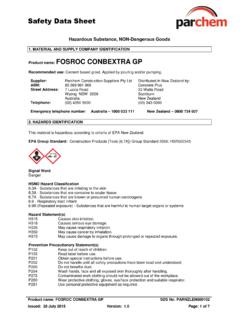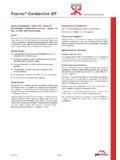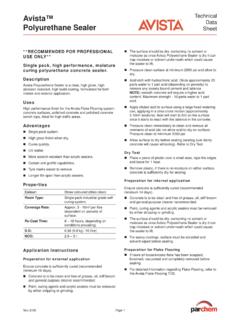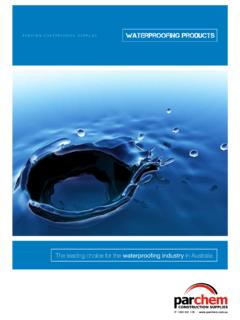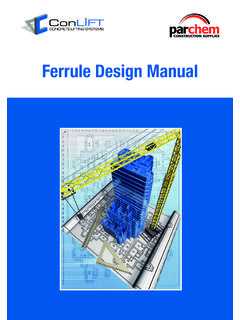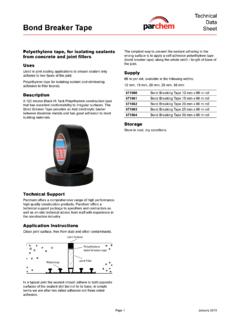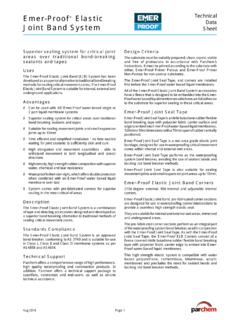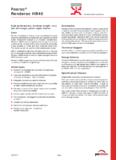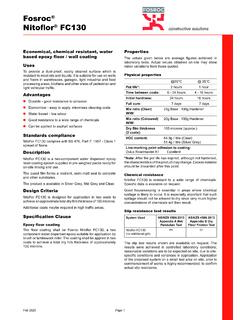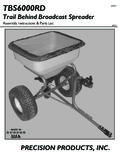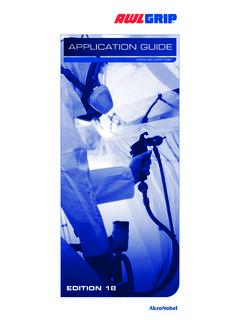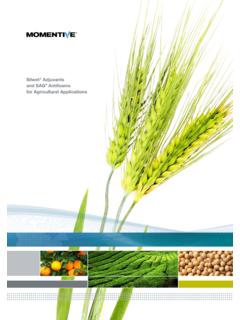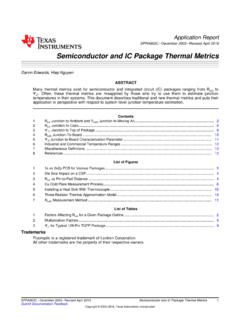Transcription of Vandex Concrete Waterproofing, Repair and a …
1 Application GuidePage 1 October 2014 Vandex Concrete waterproofing , Repair and Protective ProductsGeneral application instructions for Vandex Concrete waterproofing , Repair and protective products1. IntroductionThe following are general instructions for Concrete waterproofing , Repair and protection using Vandex capillary active, membrane type and mortar products. For detailed information concerning the products and their application please refer to the specific Technical Data Sheet and Application Guidelines under For details concerning specific problem solutions please contact Preparation of SubstrateFor Concrete to receive Vandex treatment it must have a clean surface and open capillary system to ensure maximum bonding. Surfaces to be waterproofed should be examined for structural defects, and unacceptable conditions reported and all cement laitance, shutter release agent, curing compound, loose particles, etc.
2 By means of light, wet or dry sandblasting, high pressure water jetting or wire brushing. Water leaks must be stopped in accordance with the Vandex PLUG Application all protrusions and cut back to sound Concrete , chasing out any honeycombed or damaged areas where appropriate. Construction joints and shrinkage cracks exceeding mm should be routed out to a minimum depth of 20 mm. Shutter tie holes should be all chased out areas, shutter-tie holes, etc. and pre-water until the Concrete is this, fill the areas with appropriate Vandex reprofiling and Repair mortar in layers, the number depending on the total layer and blockwork substrates Any remaining plaster, render or other substances that could inhibit bonding must be removed back to the substrate. Gypsum, remains of wood or other foreign material should be removed by appropriate means.
3 Loose pointing should be routed out and the substrate cleaned thoroughly. 3. Pre-wateringPrior to applying Vandex , carefully rinse all the surfaces to be waterproofed and pre-water with clean water. Pre-water several times so that the Concrete is thoroughly saturated. When Vandex products are applied, the surface should be damp but not wet. Any surface water on horizontal surfaces must be polymer-modified two component products observe product specific information on Technical Data Sheet and Application MixingPlace Vandex powder in a clean container, add the indicated amount of clean water or polymer dispersion for two component products and stir for at least 3 minutes with a mechanical mixer until the mixture is completely free from lumps. To maintain workability do not add water, simply re-stir the mixed, Vandex materials have a limited pot life.
4 Refer to Technical Data Sheet for details. Do not mix more material than can be used within pot Climatic ConditionsDo not apply Vandex at temperatures below +5 C or above 35 C or to a frozen substrate unless otherwise indicated for specific ApplicationBrush applicationSpecific Vandex products (refer to product s Application Guidelines) can be applied using a suitable brush (mason s brush). Ensure that all cavities in the substrate are filled in order to exclude any trapped several layers are applied it is recommended that the following layer is applied whilst the previous layer is still damp. The waiting time before applying the following layer depends on the specific product and on local climatic conditions such as humidity, temperature, etc. The previous layer must not be damaged during application of the following applicationA scrape coat of Vandex is applied with a steel trowel for maximum adhesion to the substrate, working from the bottom up.
5 Ensure that all cavities in the Concrete are filled in order to exclude any trapped products are applied in one or several layers as specified. If several layers are applied it is recommended that the following layer is applied whilst the previous layer is still damp. The waiting time before applying the following layer depends on the specific product and local climatic conditions such as humidity, temperature, etc. The previous layer must not be damaged during application of the following layer. In addition, it is recommended that the previous layer is textured by suitable means whilst still plastic. This ensures maximum adhesion between the 2 Spray applicationVandex may be applied using appropriate fine mortar spraying device. The air pressure, air volume and nozzle size required will depend on the type of Vandex material to be compressor performance must be at least 5 bar pressure, delivering 500 first layer of Vandex is applied in circular motion with the spray nozzle held at a 90 angle to the substrate.
6 The distance between the spray nozzle and the surface will depend on the spray gun/compressed air used. The material is then flattened with a suitable trowel. This operation levels the surface and increases adhesion to the several layers are applied it is recommended that the following layer is applied whilst the previous layer is still damp. The waiting time before applying the following layer depends on the specific product and local climatic conditions such as humidity, temperature, etc. The previous layer must not be damaged during application of the following addition, it is recommended that the previous layer is textured by suitable means whilst still plastic. This ensures maximum adhesion between the layers. The final layer can be left directly as a spray finish or treated to the specified Concrete Grey - dry sprinkle and power trowel applicationWhen the Concrete to be treated starts to reach initial set, the specified amount of Vandex is dry-distributed by hand using a sieve or garden type fertilizer spreader on to the Concrete is then trowelled in until coverage is uniform and the specific finish is achieved.
7 Where specified Vandex Concrete Grey is dry distributed to blinding Concrete or construction joints immediately prior to casting the structural slab or Curing and ProtectionVandex products are cement-based and will cure and harden in the same way as ordinary Concrete . Setting and hardening will depend on the surrounding temperature and maximum effectiveness from your Vandex treatment, it is essential that the layers are kept damp for at least 5 days and protected against evaporation by sun and post-watering should be carried out at intervals, starting the day following the application. Alternatively, the surfaces can be covered with plastic sheeting, Emer-Proof Geotex (geotextile fabric) or moist sand. The use of curing compounds is not recommended. In closed spaces and deep pits, air circulation should be provided for 24 hours following the Vandex polymer-modified two component products observe product specific information on Technical Data Sheet and Application freshly treated surfaces should be protected from rain for a minimum period of 24 h.
8 Surfaces treated with Vandex should be protected from frost for at least 5 days. If necessary, cover with insulation BackfillingBackfilling can be carried out 3 days after completion of the Vandex treatment. If there is a risk that the layer of Vandex will be damaged during back-filling (sharp-edged material) it must be protected by suitable means such as Emer-Proof Impraboard or Emer-Proof Drain Decoration, Coating, TilingAll surfaces treated with Vandex products, which are to be coated or painted, must be left to cure for at least 4 a plaster or render finish is required on top of the Vandex treatment, it is essential to apply a thin rough cast of sand and cement on the final Vandex layer while this is still tacky. If this is not practical, carefully clean the hardened Vandex surface and apply an appropriate bonding agent prior to on top of a Vandex treatment have to be alkali resistant.
9 Decorative coatings applied on the passive water pressure side are recommended to be water vapour permeable. When applying a paint on an elasticized polymermodified Vandex product, it must have equivalent elastic active productsAt the end of the curing period, prior to the application of coatings or paints, the surfaces should be saturated with water and neutralised with 1:8 solution of hydrochloric (muriatic) acid. Following this, the area must be thoroughly rinsed with spraying with hydrochloric (muriatic) acid solution, use protective rubber clothing and Filling of Water Retaining StructuresIn accordance with standard water industry practice, particular note needs to be taken of the following points: Clean all surfaces (ceiling, walls, slab, columns, stairs, etc.) with drinking water (do not use high pressure) Remove all cleaning water Disinfect all internal surfaces with approved disinfectants Remove all disinfectantFilling can take place when the surface treatment has hardened sufficiently, usually not less than 14 days after Concrete waterproofing , Repair and Protective ProductsPage 3 Parchem Construction Supplies Pty Ltd7 Lucca Road, Wyong NSW 2259 Phone: 1300 737 80 069 961 968 Distributed in New Zealand by: Concrete Plus Ltd23 Watts Rd, Sockburn 8042 Ph: 03 343 0090 Important noticeA Safety Data Sheet (SDS) and Technical Data Sheet (TDS) are available from the Parchem website or upon request from the nearest Parchem sales office.
10 Read the SDS and TDS carefully prior to use as application or performance data may change from time to time. In emergency, contact any Poisons Information Centre (phone 13 11 26 within Australia) or a doctor for disclaimerThis Application Guide summarises our best knowledge of the product, including how to use and apply the product based on the information available at the time. You should read all literature carefully and consider the information in the context of how the product will be used, including in conjunction with any other product and the type of surfaces to, and the manner in which, the product will be applied. Our responsibility for products sold is subject to our standard terms and conditions of sale. Parchem does not accept any liability either directly or indirectly for any losses suffered in connection with the use or application of the product whether or not in accordance with any advice, specification, recommendation or information given by it.
